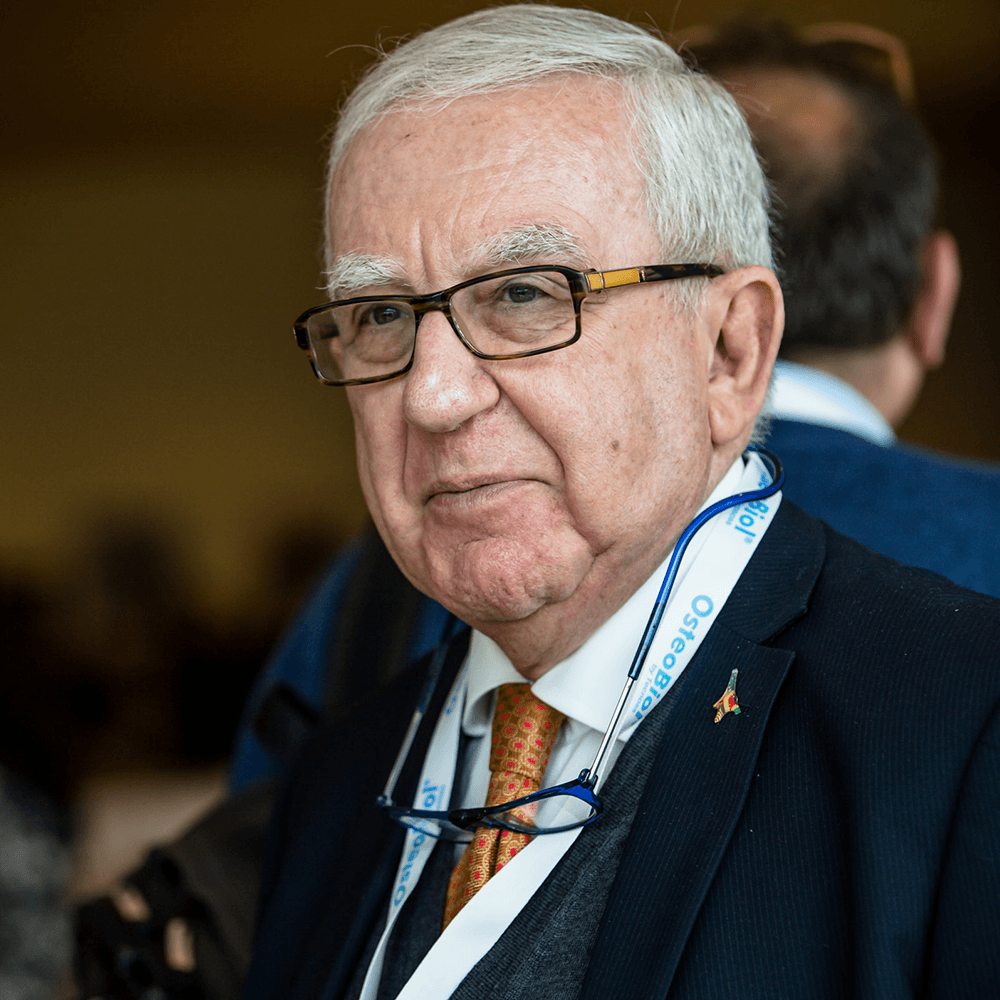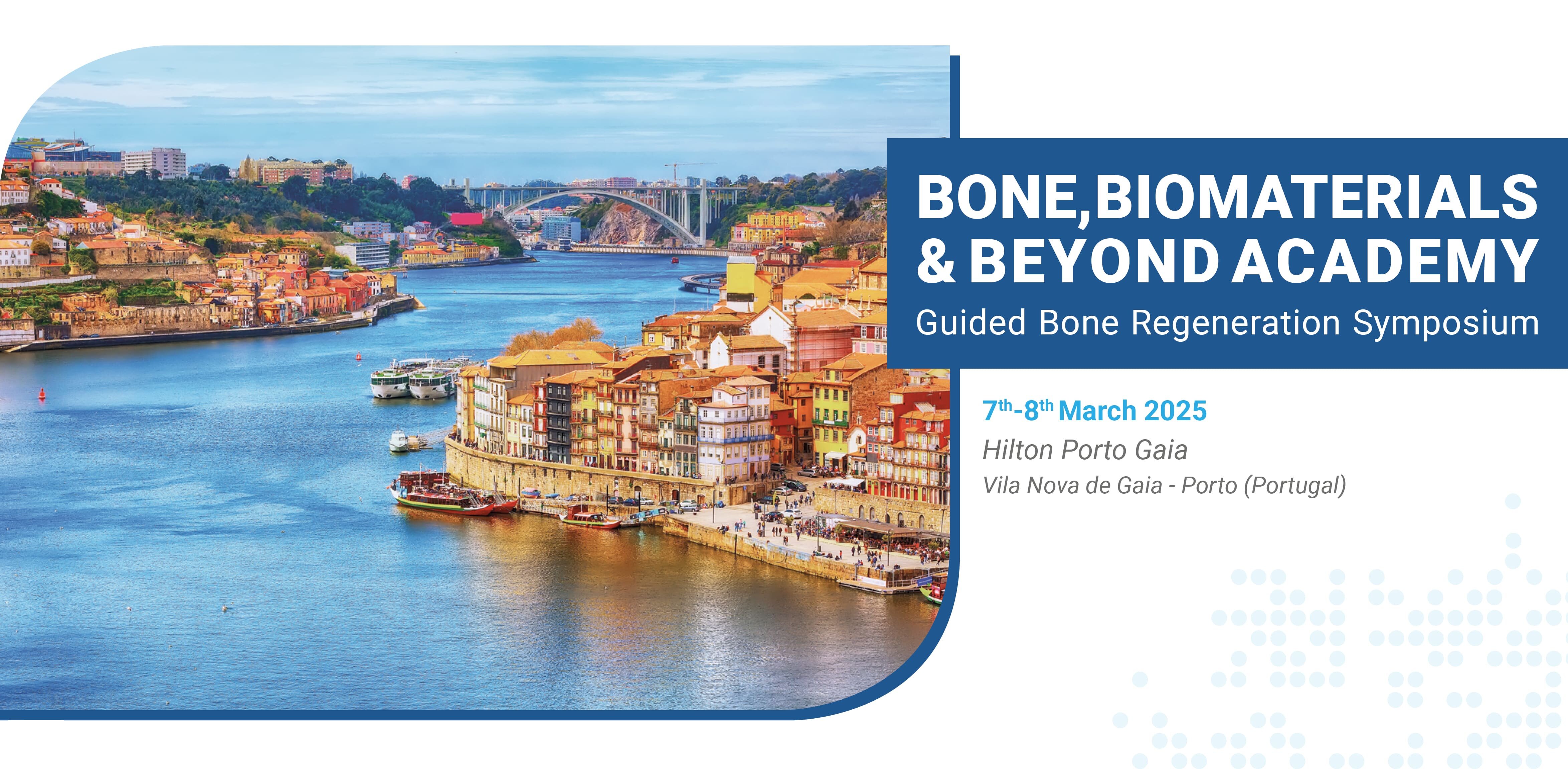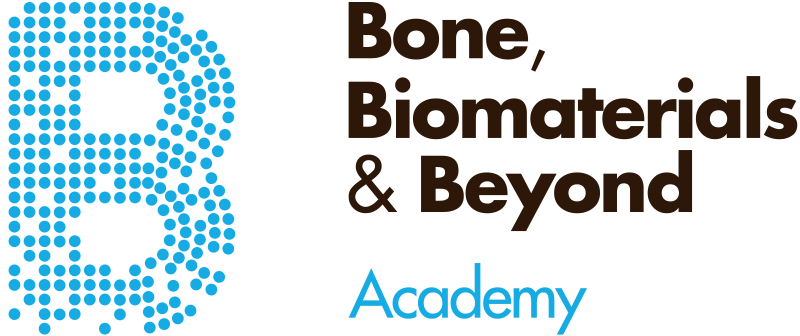The International Journal of Oral & Maxillofacial Implants, 5/2024
DOI: 10.11607/jomi.10759, ID de PubMed (PMID): 38381968Páginas 699-706, Idioma: InglésYonezawa, Daichi / Apaza Alccayhuaman, Karol Alí / Iezzi, Giovanna / Piattelli, Adriano / Ferri, Mauro / Boticelli, DanielePurpose: To evaluate the influence of immediate loading on the osseointegration and bone density of implants placed in a healed alveolar bone crest and supporting single crowns. Materials and Methods: Two solid titanium transmucosal miniimplants were placed in the distal regions of the mandible in 14 patients. One mini-implant was immediately functionally loaded, whereas the other was left unloaded. After 2 months of healing, biopsy samples were retrieved and the levels of new bone, old bone, and total bone (new + old) were assessed. Results: Histologic examination was performed on biopsies from 12 patients (n = 12). The new bone-to-implant contact percentage (BIC%) was 40.3% ± 16.8% and 55.1% ± 19.1% (P = .043) at the unloaded and loaded sites, respectively; in addition, the total BIC% was 44.9% ± 17.0% and 59.5% ± 18.8%, respectively (P = .034). The new bone density was 45.9% ± 11.6% for the unloaded implants and 45.9% ± 16.7% for the loaded implants (P = .622). Conclusions: Immediate loading had a positive effect on bone apposition at the implant surface, but no effect on bone density was observed after 2 months of healing.
Palabras clave: biopsy, clinical trial, immediate dental implant loading, implant-supported prosthesis, osseointegration
International Journal of Periodontics & Restorative Dentistry, 6/2023
DOI: 10.11607/prd.6166, ID de PubMed (PMID): 37347612Páginas 675-685, Idioma: InglésIezzi, Giovanna / Valente, Nicola Alberto / Velasco-Ortega, Eugenio / Piattelli, Adriano / Perez, Alexandre / D'amico, Emira / Barone, AntonioThe primary aim of this study was to assess the histomorphometric outcomes of extraction sockets grafted with freeze-dried bone allograft (FDBA) and sealed with a collagen membrane after 3 months of healing in specific region of interest (ROI) areas. The secondary aims were to analyze the biomaterial resorption rate, the bone-to-biomaterial contact (BBC), and the area and perimeter of grafted particles compared with commercially available FDBA particles. Fifteen patients underwent tooth extractions and ridge preservation procedures performed with FDBA and a collagen membrane. Bone biopsy samples were harvested after 3 months at the time of implant placement for histologic and histomorphometric analysis. Two areas of concern (ROI1 and ROI2) with different histologic features were identified within the biopsy samples; ROI1, ROI2, and commercially available particles were analyzed and compared. The following parameters were analyzed: newly formed bone, marrow space, residual graft particles, perimeter and area of FDBA particles, and BBC. The histomorphometric analysis showed 35.22% ± 10.79% newly formed bone, 52.55% ± 16.06% marrow spaces, and 12.41% ± 7.87% residual graft particles. Moreover, the histologic data from ROI1 and ROI2 showed that (1) the mean percentage of BBC was 64.61% ± 27.14%; (2) the newly formed bone was significantly higher in ROI1 than in ROI2; (3) the marrow space was significantly lower in ROI1 than in ROI2; and (4) the FDBA particles in ROI1 sites showed significantly lower area and perimeter when compared to commercially available FDBA particles. This latter data led to the hypothesis that FDBA particles embedded in newly formed bone undergo a resorption/remodeling process.
The International Journal of Prosthodontics, 1/2023
DOI: 10.11607/ijp.7369, ID de PubMed (PMID): 36484658Páginas 104-112, Idioma: InglésDegidi, Marco / Nardi, Diego / Sighinolfi, Gianluca / Degidi, Davide / Piattelli, AdrianoPurpose: To provide a 1-year assessment of friction-retention abutments used to retain a single lithium disilicate (LS2) monolithic restoration.
Materials and Methods: A total of 522 implants were placed to treat a mandibular or a maxillary single-tooth premolar or molar edentulous site. Three types of implants were used. The tested abutments were connected 3 months after implant placement. A single pressed LS2 monolithic restoration was cemented to a dedicated titanium cap and engaged to the abutment without the use of screws or cement. Any complications affecting the restoration or the opposing dentition, any soft tissue dimensional changes, the distance between the implant platform and the bone peak, and pocket probing depths were recorded at the time of restoration placement (T0), after 6 months of function (T1), and after 1 year of function (T2). Esthetic, functional, and biologic parameters were recorded at T0 and T2.
Results: A total of 507 patients (284 women and 223 men) received a restoration at T0, and 504 reached the 1-year follow-up at T2. One restoration fractured after 10 months in function. No statistically significant differences were seen in the soft tissue measurements or in the measurements of the distance between the supporting implant platform and the bone peak. None of the restorations detached during the observation period.
Conclusion: The friction retention abutment is a viable option to retain an implantsupported monolithic LS2 glass-ceramic restoration in cases of premolar or molar single-tooth edentulism.
The International Journal of Oral & Maxillofacial Implants, 1/2022
DOI: 10.11607/jomi.9105Páginas 57-66, Idioma: InglésLollobrigida, Marco / Lamazza, Luca / Di Pietro, Marisa / Filardo, Simone / Lopreiato, Mariangela / Mariano, Alessia / Bozzuto, Giuseppina / Molinari, Agnese / Menchini, Francesca / Piattelli, Adriano / De Biase, Alberto
Purpose: The aim of this ex vivo study was to assess the ability to remove oral biofilm by different combinations of mechanical and chemical treatments on smooth and rough titanium surfaces, as well as their impact on osteoconduction.
Materials and methods: Forty-eight sandblasted acid-etched (SLA) and 48 machined titanium disks were contaminated with oral bacterial biofilm and exposed to the following treatments: (1) titanium brush (TB), (2) TB + 40% citric acid (CA), (3) TB + 5.25% sodium hypochlorite (NaOCl), (4) air polishing with glycine powder (AP), (5) AP + 40% CA, and (6) AP + 5.25% NaOCl. Residual bacteria and chemical contamination were assessed using viable bacterial count assay, scanning electron microscopy (SEM), and x-ray spectroscopy (XPS). Human primary osteoblast (hOB) adhesion and osteocalcin (OC) release were also evaluated.
Results: The microbiologic, SEM, and XPS analysis indicate a higher biofilm removal efficiency of combined mechanical-chemical treatments compared with exclusively mechanical approaches, especially on SLA surfaces. SEM analysis revealed significant alterations of surface microtopography on the disks treated with TB, while no changes were observed after AP treatment. OC release by hOBs was mainly decreased on disks treated with CA and NaOCl.
Conclusion: The combination of mechanical and chemical treatments provides effective oral biofilm removal on both SLA and machined implant surfaces. NaOCl and CA may have a negative effect on osteoblasts cultured on SLA samples.
Palabras clave: antiseptics, implant decontamination, peri-implantitis, surface decontamination
The International Journal of Oral & Maxillofacial Implants, 1/2022
DOI: 10.11607/jomi.8969Páginas 76-84h, Idioma: InglésFrancis, Samy / Iaculli, Flavia / Perrotti, Vittoria / Piattelli, Adriano / Quaranta, Alessandro
Purpose: To achieve high plaque removal around peri-implant tissues, noninvasive cleaning methods that guarantee the long-term success and survival of titanium implants should be established. This systematic review aimed to systematically evaluate in vitro investigations assessing different treatment modalities to decontaminate titanium surfaces, with special focus on the most effective cleaning procedures.
Materials and methods: PRISMA guidelines were adopted in an electronic search conducted through MEDLINE, Scopus, and Google Scholar databases to identify studies on mechanical, chemical, or laser decontamination modalities up to November 2019.
Results: The search resulted in 326 articles; after removing duplicates and reading titles, abstracts, and full texts, 38 articles were ultimately processed for data extraction. Mechanical decontamination provided better results in comparison to laser and chemical procedures. Among mechanical modalities, air abrasion showed the best cleaning effectiveness. Conversely, upon comparison of the chemical methods, chlorhexidine demonstrated comparable results with all tested substances and even with photodynamic therapy. Among different lasers, the results showed that the diode was more promising compared with the other tested lasers.
Conclusion: This review demonstrated that there is still no consensus on which technique performs better. However, mechanical decontamination yielded more favorable results than laser and chemical methods. This aspect would support the hypothesis that decontamination procedures adopted in a combination fashion, which includes mechanical procedures, may provide better clinical results than when used alone.
Palabras clave: chemical decontamination, cleaning efficacy, dental implants, laser decontamination, mechanical decontamination
International Journal of Periodontics & Restorative Dentistry, 1/2022
DOI: 10.11607/prd.5430Páginas 75-81d, Idioma: InglésTumedei, Margherita / Mancinelli, Rosa / Di Filippo, Ester Sara / Marrone, Mariangela / Iezzi, Giovanna / Piattelli, Adriano / Fulle, StefaniaBone blocks are proposed in oral bone regeneration for their biocompatibility and osteoconductivity. Human dental pulp stem cells (hDPSCs) have been used with bone substitutes as a biocomplex. Melatonin, produced by the pineal gland, has specific functions in the oral cavity in bone remodeling and enhancing the dual actions on osteoblasts and osteoclasts, the genic expression of bone markers. This study evaluated the osteogenic differentiation of hDPSCs, stimulated by melatonin on equine bone blocks. hDPSCs were cultured in growth medium (GM) or differentiation medium (DM) with or without the presence of equine bone blocks and 100 μm melatonin. After 7, 14, and 21 days of culture, expression of miRNAs (miR-133a, miR-133b, miR-135a, miR-29b, miR-206, and miR- let-7b) and genes (RUNX2, SMAD5, HDAC4, COL4a2, and COL5a3), osteocalcin levels and histolgic analyses were evaluated. Melatonin and equine blocks increased the osteogenic potential of hDPSCs even in GM, regulated miRNA and gene expression related to osteogenesis, and increased osteocalcin. hDPSCs cultured in DM showed a significantly higher osteogenic potential compared to GM. This study suggests that equine bone blocks and melatonin enhanced osteogenesis, stimulating early stages of cell differentiation. hDPSCs/equine bone block and melatonin represent a promising, useful biocomplex in bone regeneration with a potential for a possible clinical application.
International Journal of Periodontics & Restorative Dentistry, 6/2021
DOI: 10.11607/prd.4558Páginas 903-910, Idioma: InglésTestori, Tiziano / Wang, Hom-Lay / Wallace, Stephen S / Piattelli, Adriano / Iezzi, Giovanna / Tavelli, Lorenzo / Tumedei, Margherita / Vinci, Raffaele / Del Fabbro, MassimoMaxillary sinus grafting is generally a safe procedure. However, intraoperative complications, as well as early and late postoperative complications, may occur. Included in the latter group are graft infections that can be triggered by peri-implantitis. The aim of the present study was to report three cases of late maxillary sinus graft infections and to histologically evaluate the effects of peri-implantitis in the grafted area. In peri-implantitis cases in grafted sinuses, the sole removal of the implant along with accompanying debridement of the infected area may not be sufficient to resolve the infection, and a more-aggressive treatment may be necessary.
The International Journal of Oral & Maxillofacial Implants, 5/2021
DOI: 10.11607/jomi.8739Páginas 929-936, Idioma: InglésD'Ercole, Simonetta / Di Campli, Emanuela / Pilato, Serena / Iezzi, Giovanna / Cellini, Luigina / Piattelli, Adriano / Petrini, Morena
Purpose: The aim of this study was to compare the Streptococcus oralis biofilm formation on titanium machined turned surfaces and sandblasted surfaces that were previously characterized for their superficial topographies.
Materials and methods: Two commercially pure titanium surfaces were analyzed and compared: machined (turned surfaces subjected to a process of decontamination that also included a double acid attack) and sandblasted (sandblasted surfaces, cleaned with purified water, enzymatic detergent, acetone, and alcohol). The characterization of the samples at the nanolevel was performed using atomic force microscopy, which permitted calculation of the superficial nanoroughness (Ra). The sessile drop method was used to measure the water contact angle in both groups and allowed information to be gained about their wetting properties. Scanning electron microscope and energy-dispersive x-ray spectroscopy analysis allowed comparison of the microtopographic geometry and the chemical composition of the samples. Then, the disks were pre-incubated with saliva in order to form an acquired pellicle. Streptococcus oralis was put on the disks, and both groups were tested at 24 and 48 hours for biofilm biomass evaluation, colony-forming units (CFUs), and live/dead staining for cell viability.
Results: The sandblasted samples were characterized by a significantly higher level of superficial oxides, superficial roughness, and hydrophilicity, compared with the machined turned samples. Although there were topographic differences, the Streptococcus oralis biofilm formation, quantified in CFUs, and biomass formation at 24 and 48 hours were similar in both groups. With the live/dead staining, the sandblasted disks were characterized by an increased percentage of dead cells compared with the machined disks.
Conclusion: Although significant topographic differences were present between machined and sandblasted disks, the Streptococcus oralis biofilm formation seems to not be significantly affected.
Palabras clave: bacteria, biofilm, biomaterials, microbiology, nanosurfaces, titanium surface
The International Journal of Oral & Maxillofacial Implants, 3/2021
Páginas 423-431, Idioma: InglésDi Stefano, Danilo Alessio / Piattelli, Adriano / Iezzi, Giovanna / Orlando, Francesco / Arosio, Paolo
Purpose: Bone density and implant primary stability parameters have been introduced that are based on calculating (1) the average of the instantaneous torque needed to keep the rotation speed of a bone density probe constant while it descends into bone or (2) the integral of the instantaneous torque-depth curve at implant insertion (I), a quantity that is equal to the insertion energy multiplied by a constant. This study aimed to determine how these two quantities are affected by the presence and thickness of a cortical bone layer.
Materials and methods: An instantaneous torque-measuring micromotor was used to measure the density of six double-layer polyurethane foam blocks mimicking different cortical/cancellous bone combinations. Twenty measurements per block were collected, averaged, and compared. The insertion torque and the integral (I) of the instantaneous torque-depth curve at implant insertion were recorded when 20 3.75 × 12-mm cylindrical implants were inserted in each of nine blocks, including three single-layer blocks simulating the absence of a cortical layer, under three final cortical (countersink) preparations: 4.0, 3.7, and 3.5 mm. The relationship between the insertion torque, the integral of the instantaneous torque-depth curve at implant insertion (I), cortical thickness, and the final diameter preparation were investigated with regression and best-fit slope analyses.
Results: Bone density measurements showed that the average of the instantaneous torque at probing allowed differentiation of five of six different bone classes (hard-hard, hard-normal, hard-soft, normal-normal, normal-soft, soft-soft); the post hoc analysis of variance (ANOVA) comparisons were all statistically significant except for the hard-soft-normal-soft pair. The insertion torque and the integral (I) of the instantaneous torque-depth curve at implant insertion increased proportionally with cortical bone thickness (Pearson's r > 0.96 in all cases).
Conclusion: When the final preparation varied from 3.7 mm to 3.5 mm, the insertion torque-thickness plot slope did not change significantly, while that of the instantaneous torquedepth curve integral (I)-thickness plot did change, suggesting that the torque-depth curve at implant insertion integral (I) may detect the increase in implant stability consequent to slight anatomical changes or changes in the site preparation protocol better than the insertion torque when measuring the cortical bone layer stress while undergoing insertion. These findings concerning bone density and primary stability should be investigated further using different experimental settings. If confirmed, they might generate improvements in the predictability of implant and prosthetic rehabilitation outcomes.
Palabras clave: bone density, cortical thickness, insertion torque, primary stability, torque-depth curve integral
The International Journal of Prosthodontics, 1/2021
Páginas 37-46, Idioma: InglésDegidi, Marco / Nardi, Diego / Sighinolfi, Gianluca / Degidi, Davide / Piattelli, AdrianoPurpose: To evaluate the 2-year performance of definitive implant- or tooth-supported three-unit fixed dental prostheses made of zirconia-reinforced lithium silicate placed to restore premolars and molars in clinical cases of partial edentulism.
Materials and Methods: All patients received a three-unit fixed restoration made of monolithic, hot-pressed, zirconia-reinforced lithium silicate glass-ceramic. The restoration was cemented to two natural teeth or attached to two 3.5- or 4.5-mm–diameter square threaded, gritblasted, acid-etched integrated implants with a Morse taper connection. Peri-implant pocket depth and bone and soft tissue remodeling were recorded for 2 years at each follow-up visit. Esthetic, functional, and biologic United States Public Health Services (USPHS) parameters modified by the World Dental Federation study design were assessed yearly until the final follow-up appointment. At the time of placement of the definitive restorations and at the 2-year follow-up visit, the opposing dentitions were identified by type of restoration and supporting structures.
Results: A total of 100 patients were consecutively enrolled in the period between June 2016 and July 2017, and 50 patients each received an implant-supported restoration (Group A) or a tooth-supported restoration (Group B). One (2%) of the 50 implant-supported prostheses fractured after 21 months of function. None of the other prostheses failed or became loose or detached. No significant differences involving probing levels or bone and soft tissue remodeling were found between the follow-up times. No cases of inflammation or infection of the mucosal cuff around the neck of the implants were recorded. The most common issue occurred immediately after placement of the prosthesis, when 3 patients (6%) from Group A and 4 patients (8%) from Group B asked for a modification of tooth shade.
Conclusion: Implant-supported or tooth-supported three-unit fixed dental prostheses made of zirconia-reinforced lithium silicate can be used to successfully restore cases of posterior partial edentulism. The 2-year results of this report will be studied more in depth in ongoing long-term research.






